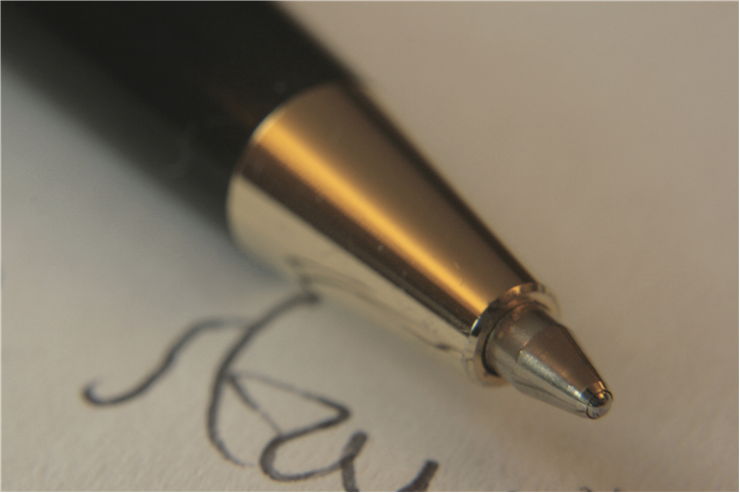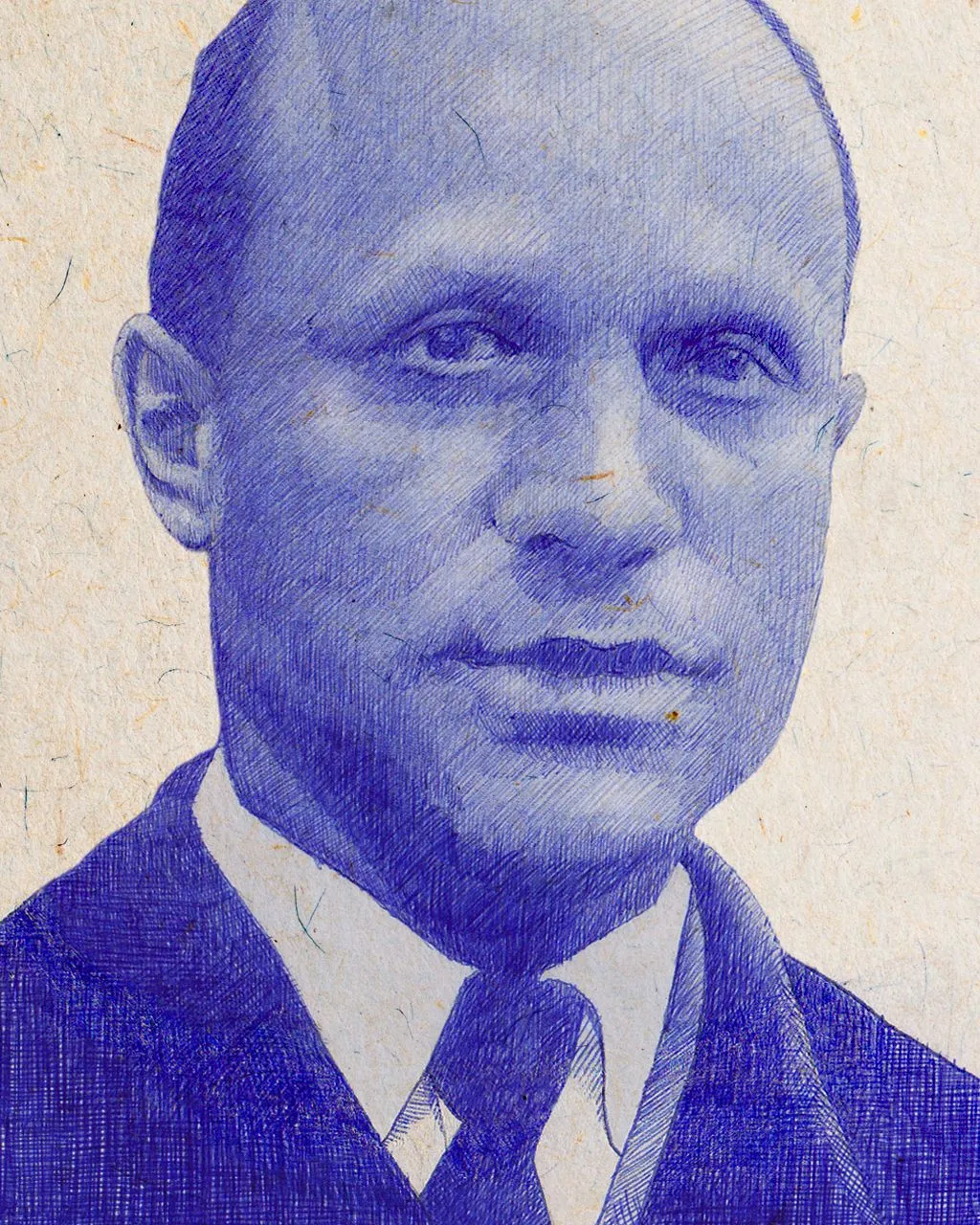
Ballpoint pens today come in many different styles and builds, some of which can be seen as cheap while others are durable and of high quality. They can be sold in packs of hundreds or in singles costing just as much. And while both styles do the same job, there’s more to be said about how this difference can relate back to its timeline and current representation. We can see then that its development, commercialization, and symbolism creates a good necessary for day-to-day activities and communication.
History and development

The initial patent for the ballpoint pen was issued in 1888 to Tanner John J. Loud, an inventor trying to create a pen that can write reliably on leather. This patent, however, isn’t directly related to the pens we use today due to its lack of commercial potential and usability (History of Pencils). From the issuance of this patent, enough time was passed for it to expire before any significant progress was made in the 1930s by Hungarian brothers Lazlo and Georg Biro. Using the concept of a rotating sphere allowing ink to pass through the tip of the pen, they were able to create a manufacturing process and plant in Argentina during World War II (encyclopedia). Ballpoint pens also attracted the attention of militaries as lightweight note-taking devices to replace any ink and sharp metal that would have to be carried otherwise. The English, for example, bought rights to produce the pens for their Air Force, which increased their commercialization throughout Europe (encyclopedia)
Once the ballpoint pen was developed as a product, it was seen as a luxury good that was quite expensive compared to the fountain pens common before it. An example of the initial worth of these pens is seen by Reynolds International Pen Company selling new ballpoints for $12.50 ($180 today) in the first emerging market for these pens in the U.S. (Dowling, 2020). Even with this selective market, Gimbles, the seller for Reynolds International Pen Company, was able to sell $5.6 million worth of pens in six months by advertising the ability of their pens to write for years without needing refills (Dowling, 2020). Reynolds identified that time was something people would pay for even if it was through a luxury good in this case and capitalized on this.
Materials and uses
Ballpoint pens usually require precise manufacturing and quality checks to prevent as many leaks and defective units sold as possible. Materials required include:
- Textured tungsten carbide ball
- Brass (an alloy using copper and zinc)
- Aluminum
- Plastics for the body of the pen
- Castor oil and lubricants
- And custom ink
- (encyclopedia)
The tungsten ball is made as a near-perfect sphere to be able to allow ink through the tip evenly without smearing. Additionally, the ink used needs to be thicker than the previous fountain pens, but still continuous and free of debris or blockages. A major way of achieving this was to include oils and lubricants into the ink and other components of the pen interacting with the ink, which led to a higher initial cost of production (encyclopedia, 2021). Over time, efficient methods of lubrication and ink preservation allowed for supply increases, and thereby, price decreases.
Differentiation in the market

Working with open liquid ink and fountain pens required very low viscosity to avoid ink drying in the jar or being too difficult to remove with the pen. This, however, is the opposite of what ink today looks like today and was a large part of the reason the development and full commercialization of ballpoint pens took decades. The Biro brothers worked to create thicker ink to be kept inside the pen itself that would still be dilute enough to flow smoothly from the tip (Giesbrecht, 2016). This chemical discovery was the keystone for the business that the brothers will go on to start that spread the pen around the world.
With newly discovered demand internationally, production facilities for the “Biro pen” faced a new challenge that was competition in a newly emerging market. Each producer, naturally, would want to sell as many pens as possible at the best margin, which created a scramble of cutting costs and increasing efficiency of factories around the world that bought rights to produce the pen. Out of this scramble emerged Marcel Bich, the patent rights owner in France, who changed the price per pen from $10 ($100 today) to 19 cents per pen (Giesbrecht, 2016). Bich was able to create a business bringing a luxury good into an affordable range that still has carried on to this day as a leader in the industry. Bich demonstrated not only that ballpoint pens were a business but also that the economic gap present was closeable with an appeal to many more wealth classes and situations than the fountain pen allowed for.
Pens as Class Symbols
Despite being seen as a major communicational development, the transition away from fountain pens didn’t come without its own consequences. Teachers argued that the disposable nature of ink pens was wasteful and promoting single-use items rather than reusability, which businesses would not be willing to adopt for employees (Anne, 2012). Even this concept, as common as it is today with things like disposable plates, silverware, and cameras, was worrying to those trying to predict future implications. Today with disposable items, we value convenience and are willing to waste some money and materials to bypass having to clean a plate, for example. As people recognized the idea of wealth buying time indirectly through convenience, a slow progression into a disposable goods market made sense. This unusually noticed but largely impactful side effect of the commercialization of ballpoint pens worldwide has led to increased pollution and environmental degradation. In the U.S alone, 1.6 billion pens are estimated to be thrown out every year (Dowling, 2020). There are efforts to oppose this, however, with manufacturers using more recycled plastic in production and offering ink refills to use rather than buying an entirely new pen when one runs dry (Dowling, 2020). As we inevitably move into a more environmentally aware society, the market for ballpoint pens may have to evolve more than it currently has to meet customer expectations.

In addition to promoting a disposable goods market, ballpoint pens have been symbolized as a status symbol in Movies, books, news reports, and many more forms of media. While very affordable pens are sold in packs of hundreds and are easily obtainable, a more soundly made pen can be seen as a sign of one’s importance. For example, the picture above shows Donald trump as president signing an executive order with his custom-made pen (O’brien, 2017). Even in movies, scenes including someone of high status signing a paper often include a polished metal pen in their hand or suit pocket readily available. This small choice by the movie directors or executive leaders gives importance to the scene and demonstrates wealth by excluding any plastic or cheaper materials.
“Well, writing comes from the heart. If we can help the hand to perform the task, what is wrong with that?” – Lazlo Biro
(Anne, 2012)
Overall, from the invention of the ballpoint pen to the race to sell it to the masses, it has been in development. Even something as simple as the pen sees new developments today with additions such as invisible ink (visible under blacklight) or multipurpose pens with flashlights/tools despite decades of presence in the market. Going further, the market for pens is still ever-present and will likely be for centuries to come. The quote above is how Biro would respond to critics of disposable pens and fits quite truly even today with what literature aims to achieve, the telling of a story.
Citations
Kristina Panos, et al. “Tech Hidden In Plain Sight: The Ballpoint Pen.” Hackaday, 22 Dec. 2020, hackaday.com/2020/12/17/tech-hidden-in-plain-sight-the-ballpoint-pen/.
anne. “The Invention of the Ballpoint Pen and Its Effect on Literacy.” ETEC540 Text Technologies Community Weblog, 28 Oct. 2012, blogs.ubc.ca/etec540sept12/2012/10/28/the-invention-of-the-ballpoint-pen-and-its-effects-on-literacy/.
Dowling, Stephen. “The Cheap Pen That Changed Writing Forever.” BBC Future, BBC, 29 Oct. 2020, www.bbc.com/future/article/20201028-history-of-the-ballpoint-pen.
“Ballpoint Pen History – Who Invented Ballpoint Pen?” History of Ballpoint Pens – Who Invented Ballpoint Pen?, History of Pencils, www.historyofpencils.com/writing-instruments-history/history-of-ballpoint-pens/.
Giesbrecht, Josh. “How the Ballpoint Pen Killed Cursive.” The Atlantic, Atlantic Media Company, 26 Sept. 2016, www.theatlantic.com/technology/archive/2015/08/ballpoint-pens-object-lesson-history-handwriting/402205/.
“.” CDs, Super Glue, and Salsa: How Everyday Products Are Made: Series 3. . Encyclopedia.com. 31 Mar. 2021 .” Encyclopedia.com, Encyclopedia.com, 31 Mar. 2021, www.encyclopedia.com/education/culture-magazines/ballpoint-pen.
“a Vintage Fountain Pen Leaning against an Open Bottle of Ink.” 123RF, www.123rf.com/photo_13501496_a-vintage-fountain-pen-leaning-against-an-open-bottle-of-ink.html.
O’brien, M. (2017, February 17). Trump, fond of executive orders, awaits more FANCY PENS. Retrieved April 10, 2021, from https://apnews.com/article/401a2d1e8cb34766b763b6190e37041e